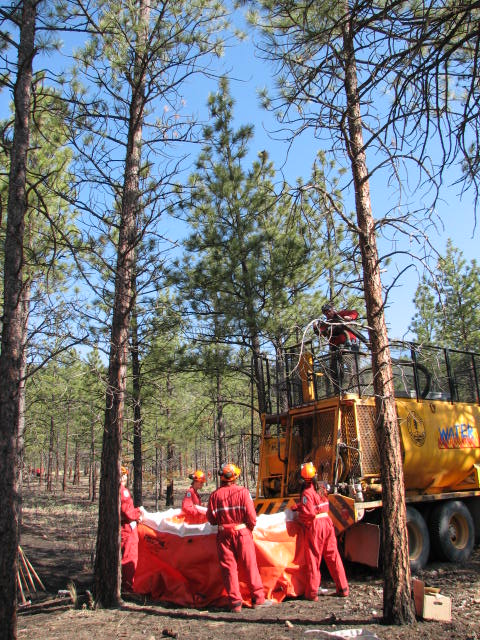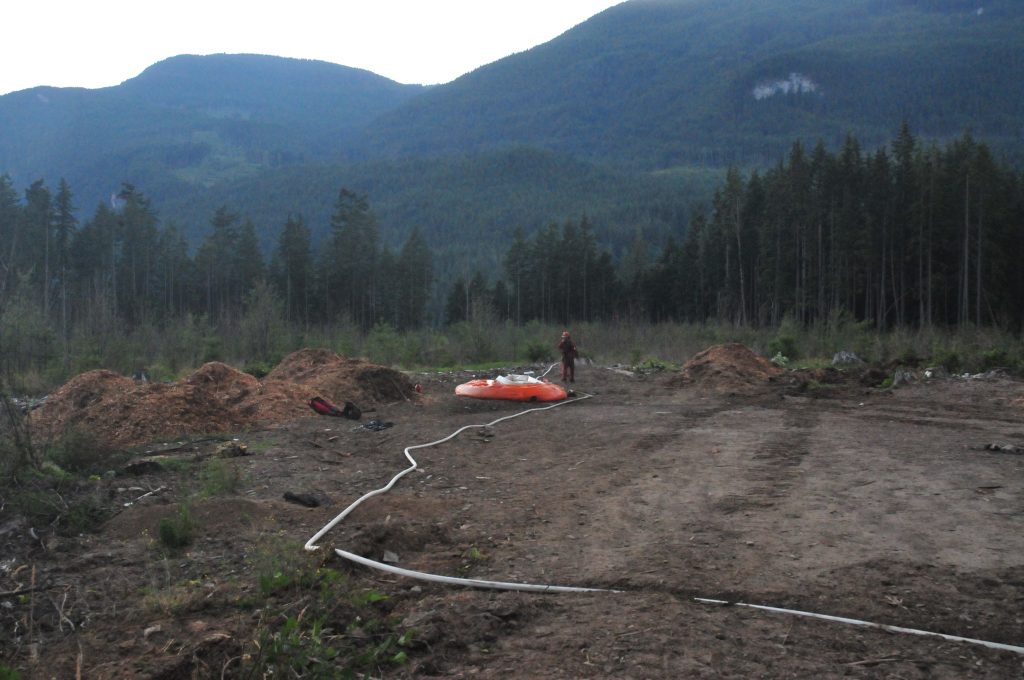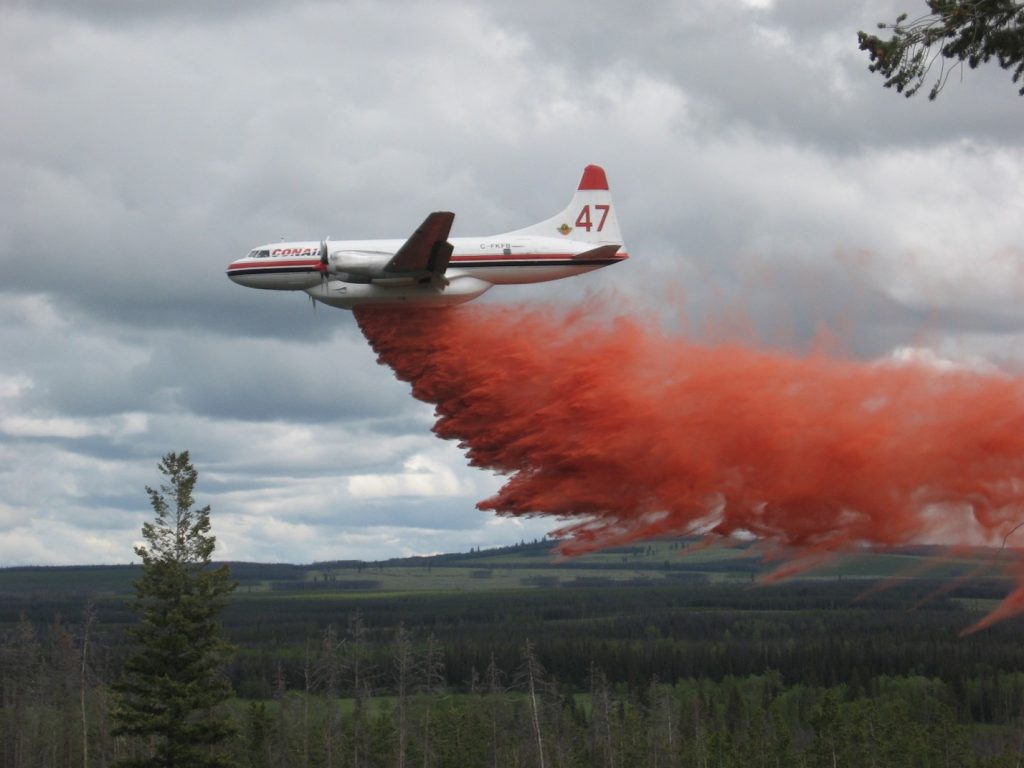Wildfires are natural to B.C.’s forests. They are needed to maintain forest health and renewal. But once the BC Wildfire Service determines a fire should be suppressed, what are the tactics?
The first thing to consider is that forests don’t usually spontaneously combust (thank goodness!). Fire is a chemical reaction to the combination of three elements: oxygen, heat and fuel. Preventing or putting out a wildfire requires managing at least one of these elements. The resulting fire behaviour will be based on weather (present, past, future), fuels (type, dryness, arrangement) and topography (terrain, slope, aspect).
The BC Wildfire Service provides operational staff with daily weather and fire behaviour briefings, which help prepare them for how fires could burn on that particular day. This helps familiarize staff with the conditions they may face in regions around the province and the fuels within them. In addition, BC Wildfire Service firefighters undergo vigorous training to understand how the science of wildfire integrates into the work they undertake. This combination of science and experience informs the approach and strategy used to put out a fire.
When firefighters arrive at the scene of a wildfire, the Incident Commander (IC) will assess the fire and compare observed fire behaviour to what was expected, assess the fuels in the area and determine its potential rate of spread and direction. The IC also considers what values might be at risk when deciding the best tactics to use to control the fire. This information, along with any needed assistance requests, will be conveyed back to the fire centre.
All the activities a firefighter undertakes will mitigate or remove one or more sides of the fire triangle:

Reducing heat
Reducing the heat of the fire is commonly done by water and initiating a water delivery system will be top of mind for crews. Water cools the temperature of fuels and creates humidity, which reduces fire intensity. Local water sources are considered, but if one is not readily available, the crews may need to set up a water delivery source based on groundwater tankers and fillable mobile tanks that crews often refer to as “pumpkins.” In remote areas, pumpkins may be filled by helicopter buckets.


If water is accessible, pumps will move water through hose lines to where firefighters work, and crews will start working on laying the hose quickly. Water will be sprayed directly on or near the fire to reduce heat. If the fire behaviour warrants, helicopters may move water with buckets to cool the fire and slow its advance while crews establish the vital water link. Water skimming aircraft may also be used to drop water on the fire.
Reducing fuel
Removing fuel is a common firefighting tactic used to stop the fire’s forward progress and cause the fire to burn itself out within a controlled area. Teams will consider natural and existing fuel-free areas such as lakes, rivers, ridge tops and if it is possible to link these features into newly constructed fuel-free areas. Firefighters can construct fuel-free fire guards by hand or machine. How quickly fire guards can be built, what resources are needed to construct them, and what they would be designed to do to determines where they should be constructed.
Reinforcing control lines to contain the existing and forecasted fire behaviour requires removing the fuel on the fire’s side of the control line to reduce the fire behaviour as it advances to the guard. Control lines can be built by hand or with heavy equipment such as bulldozers and excavators. Aggressive wildfires are too dangerous to attack directly, so control lines are built farther from the fire’s edge.
Another tactic commonly used to reinforce control lines is a planned ignition. Lower intensity fires usually require small area hand ignitions to reduce fuel immediately adjacent to the guard, and higher intensity fires may require larger planned ignition operations using aerial ignitions. Burn operations are coordinated by skilled and experienced firefighters and risk is mitigated through careful planning using fire weather information. Even though igniting unburned fuel adds more fire to the landscape, it allows BC Wildfire Service crews to control the spread of a wildfire and protect critical values.
Reducing oxygen
Oxygen is one of the more difficult factors to remove from the fire triangle.
Fire retardants, foam and water can help suppress a fire by cooling it down and smothering it. Retardant and foam are the most effective because they don’t evaporate as quickly as water. Retardants contain ammonium salts and are essentially water-soluble, industrial-strength fertilizer (with colouring added) that affect the burning process of forest fuels. When flames come into contact with retardant, the resulting reaction releases a combination of water and carbon dioxide that helps cool and suffocate the fire. Foam can also be used to help suppress a wildfire. It absorbs the heat from combustion while its bubble structure slowly releases water, which is absorbed by wood fuels.
Fire retardants, foam and water can help, but they are not permanent solutions. Water evaporates quickly on hot or warm days. Wet foam allows water to penetrate further into fuels and is a bit more protected from the elements. Still, it does evaporate in response to temperature as well. Retardant lasts longer, but it degrades slowly by the heat of the day or more quickly by the wildfire itself.

There are many complementary tactics used to put out wildfires as no one tactic can be used alone to manage wildfire. Wildfires are dynamic and unplanned, and a unique management strategy will be created for each one.
